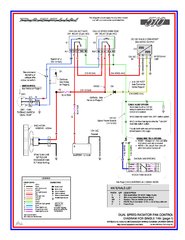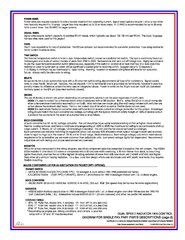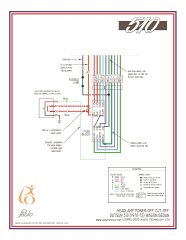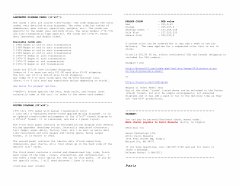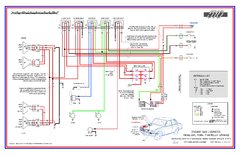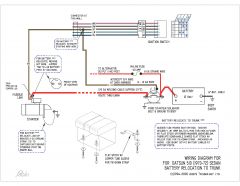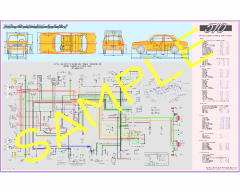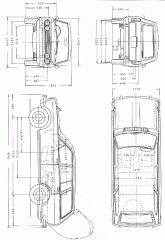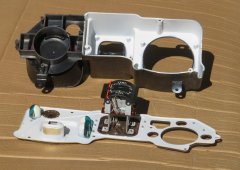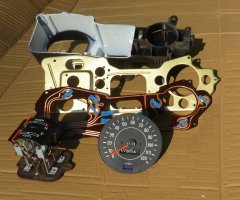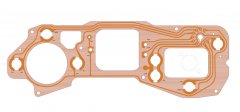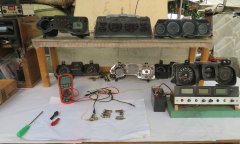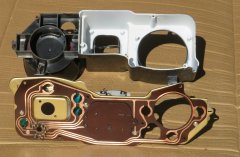-
Posts
97 -
Joined
-
Last visited
-
Days Won
1
paolo last won the day on June 20 2022
paolo had the most liked content!
Recent Profile Visitors
The recent visitors block is disabled and is not being shown to other users.
paolo's Achievements
-
paolo started following 510_Fan_Control_Wiring_DUAL-SPEED_P2.jpg and 510_Fan_Control_Wiring_DUAL-SPEED_P1.jpg
-
-
Catin Shues started following paolo
-
Images of various parts or states of my instrument cluster (dash pod) rebuilds and rebuilding processes.
-
-
-
Glove box lamp parts. 1 - Outer frame (flat piece) from a a cut-out bit of 1/10" plastic of an old computer or electronic widget. 2- Pipe is cut from 3/4" CPVC pipe. 3 - Switch is a normally closed (NC) push-button available for cheap on-line by the 10-pack. 4 - Wires are color matched parts from an old harness with coordinated barrel connectors from VintageConnections.com 5 - LED another online Amazon part. 6 - Socket is typical lamp socket from Datsun 510 instrument cluster panel which fits snugly into pipe. All assembled with hot glue. Paint as desired. Contact me for part sources.
- 1 comment
-
- glovebox lamp
- glove box
-
(and 2 more)
Tagged with:
-
-
paolo changed their profile photo
-
-
-
-
Back side of refurbished circuit board and view of pod interior with full white paint coating. The range of quality for factory painting here is surprising. I've had some with barely any coat with much exposed black plastic and others that were fairly well done. The flat/semi-gloss paint aids greatly in overall brightness. The dimmer is truly needed for night driving but allows for readability during daylight. To get uniform color and performance, if tack or clock is used, it should be opened and have the interior painted to match.
-
Back side of rebuilt cluster on test bench. Note added integral lamp harness for factory clock or tachometer. Also note orange dots on lamp sockets with matching dots on PCB to aid in easy service for directional LEDs. Also note yellow tape on charge lamp. This used to indicate incandescent bulb used which is required for standard alternators to ensure adequate resistance to enable field coils to energize. The LED, being a diode, also does not allow bi-directional current flow, which is needed for correct charge state monitoring.
-

Instrument-Cluster_Connector-Pin_Soldering.JPG
paolo commented on paolo's gallery image in Members Albums
-

Instrument-Cluster_Early-Bench-Testing.JPG
paolo commented on paolo's gallery image in Members Albums
Early test of LEDs running at full dimmer brightness setting. Later balancing illumination, while tedious, proved very effective. Photos to come... Meters seen for fuel and temp on test bench cannot measure resistances when operating, thus the -1 reading. The toggle switch at right side disconnects harness wires to assess accurate POT settings. Shown are single turn pots which have been upgraded to 10-turn linear pots for easier and more accurate readings. The pots replace the thermistor and fuel level senders. The dimmer is a 10-Khz PWM dimmer activated by blue 'LIGHTS' knob Other push-button switches should be obvious. -
As part of calibrating temp system, I analyzed several known good thermistors to generate reasonable Steinhart-Hart coefficients via curve matching of resistance measurements at various temps (e.g. 0'C, 20'C, 67'C, and 100'C). Results: RT=R25exp{B{(1/(T+273.15)-1/(25+273.15)} OHM where: R25=400, B=4100

